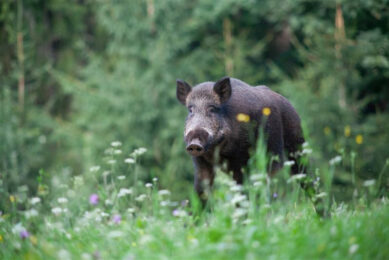Asian genes help modern pig breeds

Researchers at Wageningen University, the Netherlands, state that current-day highly prolific pig breeds are benefiting from many originally Asian genes – e.g. explaining litter sizes.
The researchers dived into history to explain the background of the current commercial pig breeds, which started with the domestication of local wild boar populations about 10,000 years ago.
During the Industrial Revolution in the 19th century, many Chinese breeds were imported to Europe to improve commercial traits in European breeds. For that reason, pigs bred in Europe these days have been shown to consist of a wide range of European and Asian gene varieties.
It is predominantly the Asian genes taking care of litter size, they wrote this month in the scientific journal Nature communications.
They wrote: “The Asian introgressed haplotypes are associated with regions harbouring genes involved in meat quality, development and fertility. We identify Asian-derived non-synonymous mutations in the AHR gene that associate with increased litter size in multiple European commercial lines. These findings demonstrate that increased fertility was an important breeding goal for early nineteenth century pig farmers, and that Asian variants of genes related to this trait were preferentially selected during the development of modern European pig breeds.”
In a press release, Prof Martien Groenen, Wageningen University, chair of the research, stated that various elements of the genome of commercial pigs resembles Chinese pigs much more than it looks like European wild boar. He said: “At first glance, this could be considered remarkable, as pigs have been domesticated in Asia and Europe independently from each other, about 10,000 years ago. One wouldn’t expect and traces of Asian DNA in European pigs.”
In an earlier research, the scientists showed that genetic diversity among commercial pigs is often larger than within the current populations of wild boar.











